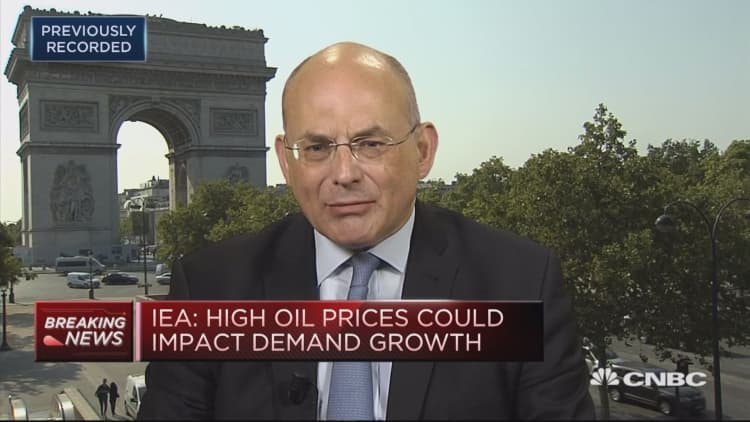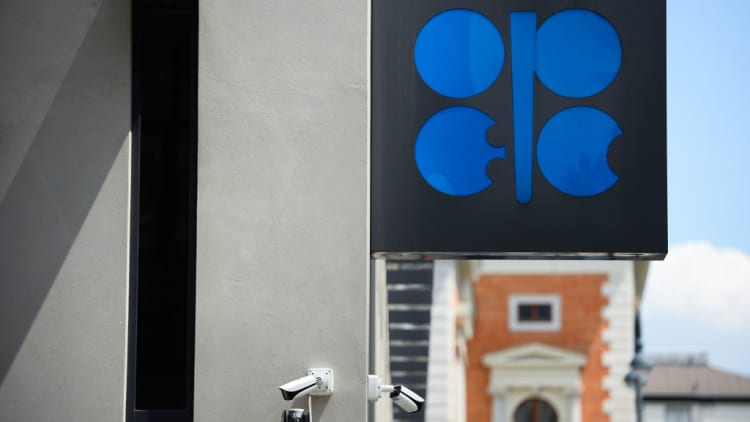OPEC’s rejuvenated bid to tame crude prices could soon exhaust the world’s spare capacity cushion, according to the latest monthly report from the International Energy Agency (IEA).
The IEA’s closely-watched report comes shortly after crude had its biggest one-day drop in two years, amid heightened U.S.-China trade tensions and persistent global crude supply problems.
“The large number of (supply) disruptions reminds us of the pressure on global oil supply. This will become an even bigger issue as rising production from Middle East Gulf countries and Russia, welcome though it is, comes at the expense of the world’s spare capacity cushion, which might be stretched to the limit,” the Paris-based organization said Thursday.
“This vulnerability currently underpins oil prices and seems likely to continue doing so,” the IEA added.

When spare capacity is high, it acts as a shock absorber to the energy market. But that cushion has shrunk considerably in recent months because of a flurry of outages in Venezuela, Libya and Canada.
And with OPEC and Russia now ramping up output, even minor disruptions in key oil-producing countries could cause prices to spike.
Vienna agreement
The IEA said crude production jumped to hit a four-month high of 31.87 million barrels per day in June. Meanwhile, spare capacity in the Middle East was thought to be around 1.6 million barrels per day in July, approximately 2 percent of worldwide output.
OPEC, Russia and several other producers recently agreed to increase output by 1 million barrels in order to ease oil prices away from 3½-year highs. But many external observers think they will struggle to add that much supply because only a handful of the Middle-East dominated countries have spare capacity.

De factor OPEC leader Saudi Arabia ramped up its crude production in June to the highest level since the end of 2016, making good on its recent pledge to tame oil prices.
The kingdom has faced elevated pressure from the likes of China, India and the U.S. in recent months, with all the big crude importers citing anxiety over rising fuel costs.
“The prospect of higher supply from members of the Vienna agreement … Is very welcome if we are going to ensure stability of oil supply to markets over the next few months,” Neil Atkinson, head of the oil industry and markets division at the IEA, told CNBC's "Street Signs" Thursday.
Oil prices
International benchmark Brent crude traded at around $74.57 on Thursday morning, up around 1.6 percent, while U.S. West Texas Intermediate (WTI) stood at $70.65, up almost 0.4 percent.
Brent crude had slumped almost 7 percent in the previous session, amid news Libya is poised to resume oil exports. The announcement of the country’s National Oil Corp on Wednesday appeared to signal an end to the tense standoff that had shut down most of the country’s oil supply. It’s reopening could see the return of as much as 850,000 barrels per day of crude flow back into international markets.
— CNBC’s Tom DiChristopher contributed to this report.



